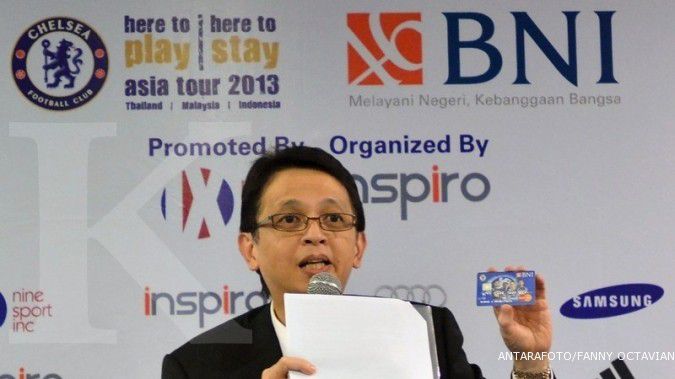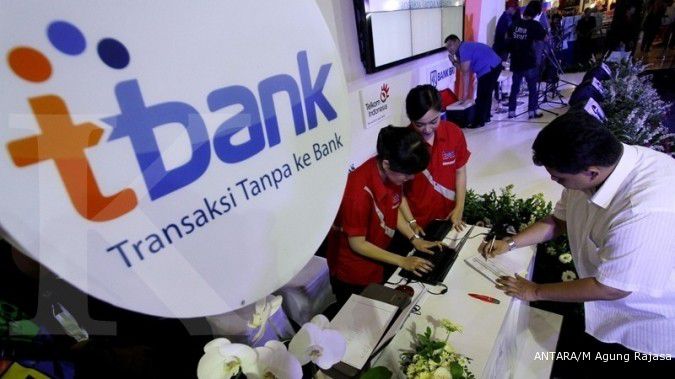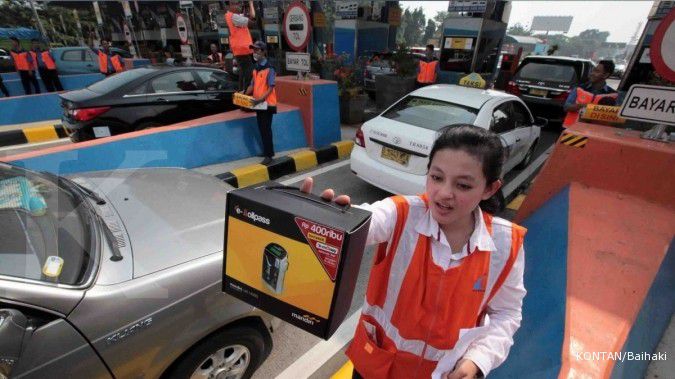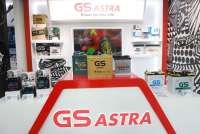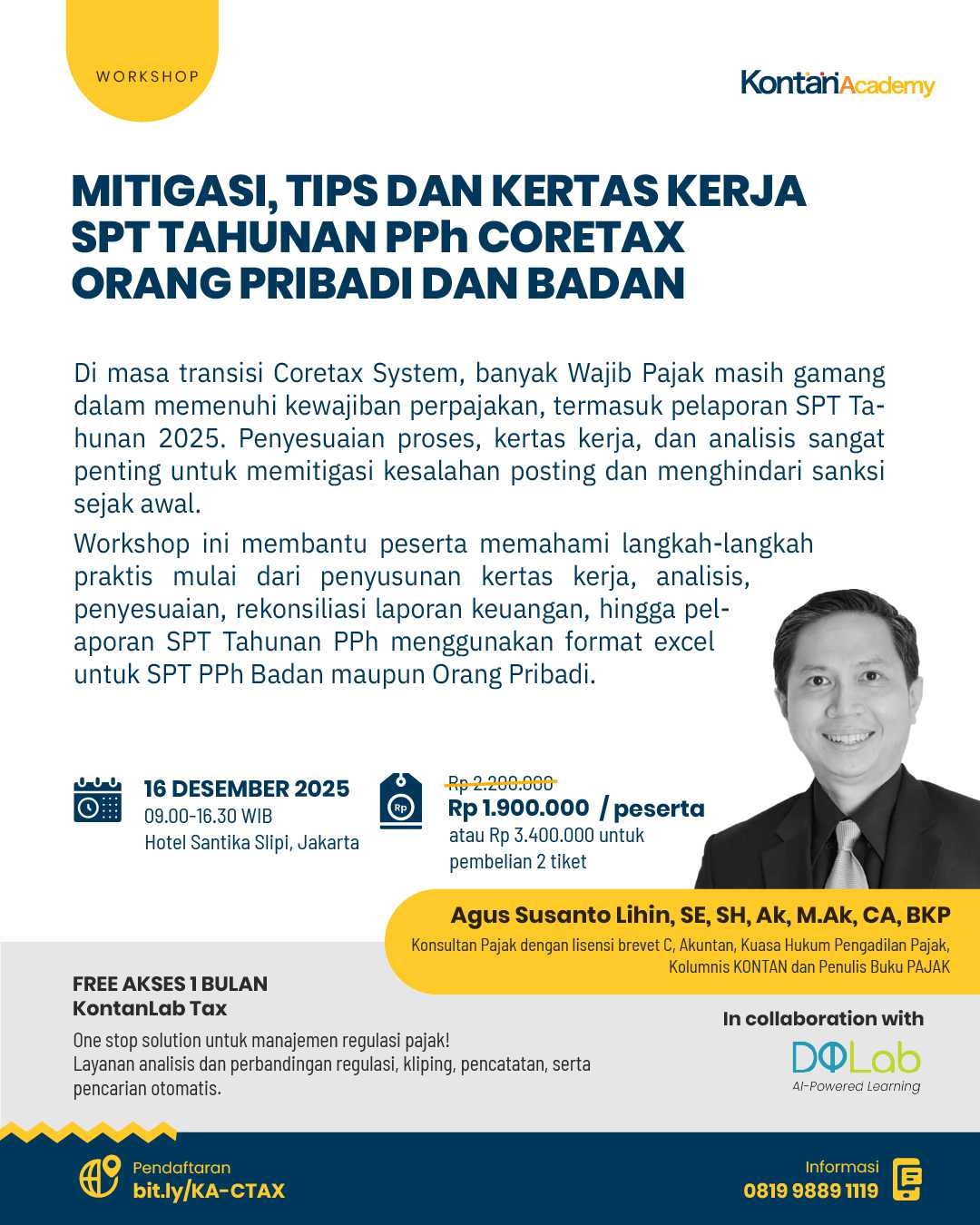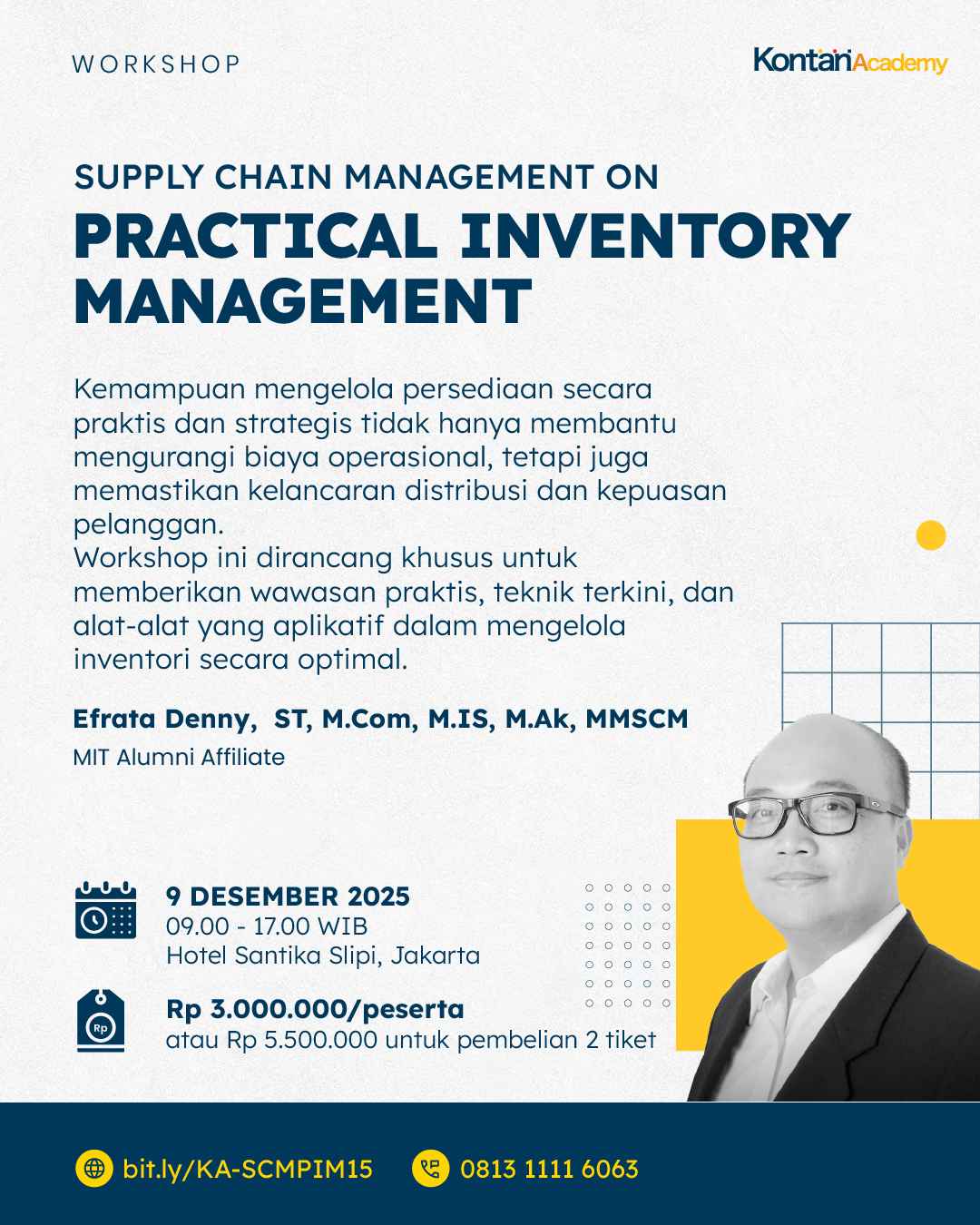Sumber: The Jakarta Post |
JAKARTA. A 17-year-old student, Marsya Khairina Azahra, waited in line to purchase a card that could be used for daily financial transaction s through an electronic system at the University of Indonesia’s Balairung meeting hall on Saturday, so she could bring less cash.
Marsya, who just got in to a tax administration major at the university, said she was interested in using the card after listening to the benefits that she would get during the e-money card familiarization session at her campus.
“It would be more efficient and easy,” she said, adding that she also happened to love shopping at some merchants cooperating with the bank.
Marsya said she was also looking forward to getting the UI Cash card, a student card that would be used for multiple purposes, including daily transactions within the UI area.
UI, cooperating with Bank Indonesia and other banks, is introducing the use of an e-money system for micro daily transaction, entitled Less Cash Society (LCS), to 8,000 new university students.
The head of the Information System Development Division of the university, Gladhi Guarddin, said on the sideline of the familiarization session on Saturday that the his team was now developing the system that would enable students to use e-money in UI areas as the implementation of LCS.
Gladhi said that along with the LCS program, the university would issue smart cards for students that could not only be used for administration purposes but also financial transaction.
He said the students could later use the card, called as UI Cash, to buy food in cafeterias and other financial transactions.
“We will also start installing the infrastructure like the card readers, firstly in three cafeterias in the campus that have been using a centered payment system,” he said, adding that it would hopefully be finished by September.
Gladhi said that for the first phase, the university would cooperate with only one bank to implement the program. “However, we will try to create a scheme that gradually enables the readers to accept all e-money cards from various banks,” he said.
At least six banks in the nation have had e-money systems using servers connecting to mobile phones and chips in cards that can be used in various places, including convenient stores, restaurants, trains and Transjakarta buses.
Yura Djalins, the deputy director of Payment System Policy and Oversight Department at Bank Indonesia, said that the LCS program at the university was actually a pilot project.
“UI is a suitable place as the students are highly educated and the infrastructure is also available,” he said.
Yura said although it did not have a specific target for the program, the bank would later implement the same program in two other universities at the end of the year and early next year.
He said the bank would keep promoting the use of e-money for daily transaction, considering e-money was more efficient and easily monitored.
Yura said another reason was the high cost of printing and distributing banknotes.
“The distribution of banknotes is not cheap, including for banks that have to store cash on ATM machines,” he said.
Yura added that e-money transaction could also lessen the threat of illegal transaction and money counterfeiting.
Bank Indonesia recorded that the daily transaction of e-money this year ranged from Rp 6 billion (US$558,000) to Rp 8 billion. The number is much smaller, comparing to the daily transaction of debit and credit cards that reached up to Rp 10 trillion and Rp 600 billion consecutively. (Corry Elyda) JAKARTA. A 17-year-old student, Marsya Khairina Azahra, waited in line to purchase a card that could be used for daily financial transaction s through an electronic system at the University of Indonesia’s Balairung meeting hall on Saturday, so she could bring less cash.
Marsya, who just got in to a tax administration major at the university, said she was interested in using the card after listening to the benefits that she would get during the e-money card familiarization session at her campus.
“It would be more efficient and easy,” she said, adding that she also happened to love shopping at some merchants cooperating with the bank.
Marsya said she was also looking forward to getting the UI Cash card, a student card that would be used for multiple purposes, including daily transactions within the UI area.
UI, cooperating with Bank Indonesia and other banks, is introducing the use of an e-money system for micro daily transaction, entitled Less Cash Society (LCS), to 8,000 new university students.
The head of the Information System Development Division of the university, Gladhi Guarddin, said on the sideline of the familiarization session on Saturday that the his team was now developing the system that would enable students to use e-money in UI areas as the implementation of LCS.
Gladhi said that along with the LCS program, the university would issue smart cards for students that could not only be used for administration purposes but also financial transaction.
He said the students could later use the card, called as UI Cash, to buy food in cafeterias and other financial transactions.
“We will also start installing the infrastructure like the card readers, firstly in three cafeterias in the campus that have been using a centered payment system,” he said, adding that it would hopefully be finished by September.
Gladhi said that for the first phase, the university would cooperate with only one bank to implement the program. “However, we will try to create a scheme that gradually enables the readers to accept all e-money cards from various banks,” he said.
At least six banks in the nation have had e-money systems using servers connecting to mobile phones and chips in cards that can be used in various places, including convenient stores, restaurants, trains and Transjakarta buses.
Yura Djalins, the deputy director of Payment System Policy and Oversight Department at Bank Indonesia, said that the LCS program at the university was actually a pilot project.
“UI is a suitable place as the students are highly educated and the infrastructure is also available,” he said.
Yura said although it did not have a specific target for the program, the bank would later implement the same program in two other universities at the end of the year and early next year.
He said the bank would keep promoting the use of e-money for daily transaction, considering e-money was more efficient and easily monitored.
Yura said another reason was the high cost of printing and distributing banknotes.
“The distribution of banknotes is not cheap, including for banks that have to store cash on ATM machines,” he said.
Yura added that e-money transaction could also lessen the threat of illegal transaction and money counterfeiting.
Bank Indonesia recorded that the daily transaction of e-money this year ranged from Rp 6 billion (US$558,000) to Rp 8 billion. The number is much smaller, comparing to the daily transaction of debit and credit cards that reached up to Rp 10 trillion and Rp 600 billion consecutively. (Corry Elyda)
Cek Berita dan Artikel yang lain di Google News


/2013/05/20/1268465275.jpg)

